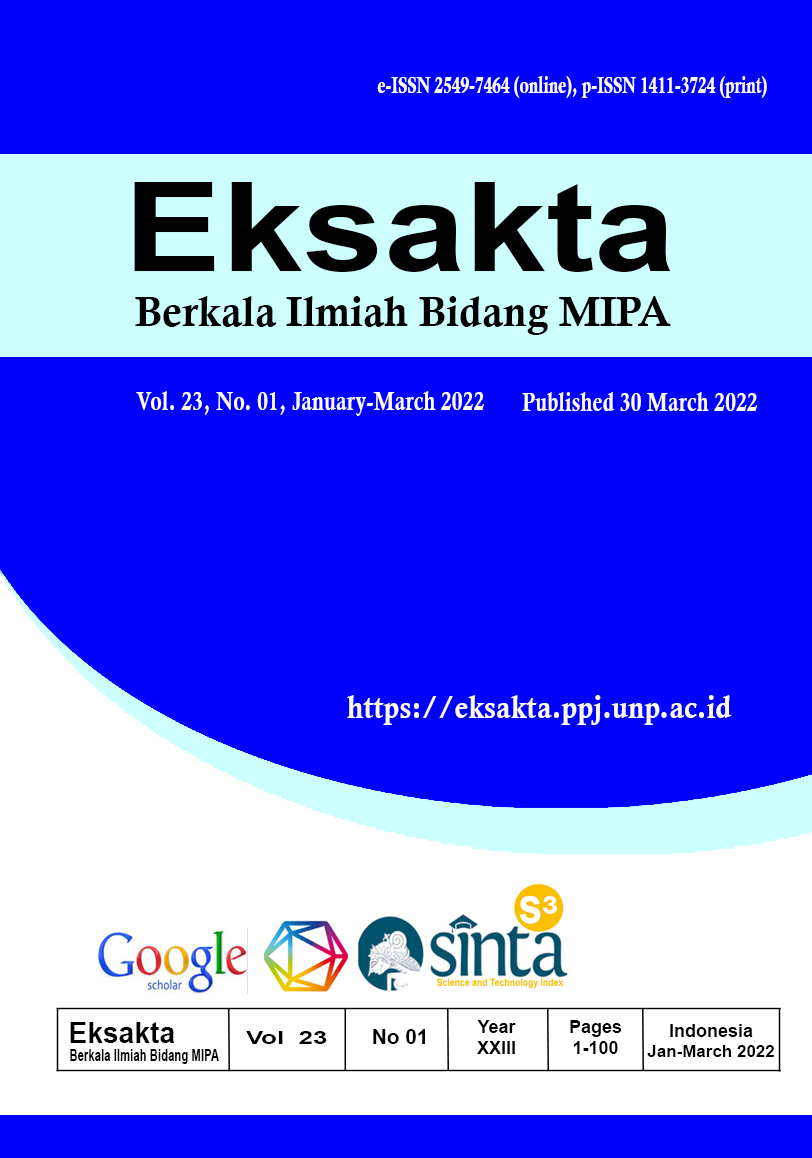Main Article Content
Abstract
The community's HBM (Health Belief Model) analysis of the COVID-19 vaccination needs to be done. This perceived threat assessment is based on perceived vulnerability and seriousness. Judgments to behave in response to perceived threats are also influenced by cues to action. Variables that cannot be explained directly or variables that require explanation from other variables are called latent variables. Latent variables consist of exogenous and endogenous variables. This study aims to analyze the public health belief model of the city of Jambi towards COVID-19 vaccination with the structural equation modeling (SEM) method. The results showed that the health belief model for COVID-19 vaccination in Jambi City, vaccination actions were significantly influenced by perceptions of benefits and barriers. Perceived benefits and barriers were significantly affected by perceived severity and seriousness and then perceived severity and seriousness were significantly influenced by cues to action. However, demographics including age, occupation, income and beliefs in this study did not significantly influence a person to vaccinate. The proposed model can be accepted based on the goodness of fit indicator
Keywords
Article Details

This work is licensed under a Creative Commons Attribution 4.0 International License.
References
- Van der Linden, S., Leiserowitz, A., & Maibach, E. (2019). The gateway belief model: A large-scale replication. Journal of Environmental Psychology, 62, 49-58.
- Salari, R., & Filus, A. (2017). Using the health belief model to explain mothers’ and fathers’ intention to participate in universal parenting programs. Prevention Science, 18(1), 83-94.
- Bae, S. Y., & Chang, P. J. (2021). The effect of coronavirus disease-19 (COVID-19) risk perception on behavioural intention towards ‘untact’tourism in South Korea during the first wave of the pandemic (March 2020). Current Issues in Tourism, 24(7), 1017-1035.
- Huang, X., Dai, S., & Xu, H. (2020). Predicting tourists' health risk preventative behaviour and travelling satisfaction in Tibet: Combining the theory of planned behaviour and health belief model. Tourism Management Perspectives, 33, 100589.
- Gabriel, E. H., Hoch, M. C., & Cramer, R. J. (2019). Health Belief Model Scale and Theory of Planned Behavior Scale to assess attitudes and perceptions of injury prevention program participation: An exploratory factor analysis. Journal of science and medicine in sport, 22(5), 544-549.
- Dodel, M., & Mesch, G. (2018). Cyber-victimization preventive behavior: A health belief model approach. Computers in Human behavior, 68, 359-367.
- Livi, S., Zeri, F., & Baroni, R. (2017). Health beliefs affect the correct replacement of daily disposable contact lenses: predicting compliance with the Health Belief Model and the Theory of Planned Behaviour. Contact Lens and Anterior Eye, 40(1), 25-32.
- Haghighi, M., Taghdisi, M. H., Nadrian, H., Moghaddam, H. R., Mahmoodi, H., & Alimohammadi, I. (2018). Safety Culture Promotion Intervention Program (SCPIP) in an oil refinery factory: an integrated application of Geller and Health Belief Models. Safety science, 93, 76-85.
- Hair, et all. (2016). Multivariate Data Analysis. 7thedition.Prentice Hall Inc., New Jersey.
- Najaf, P., Thill, J. C., Zhang, W., & Fields, M. G. (2018). City-level urban form and traffic safety: A structural equation modeling analysis of direct and indirect effects. Journal of transport geography, 69, 257-270.
- Pegolo, S., Yu, H., Morota, G., Bisutti, V., Rosa, G. J., Bittante, G., & Cecchinato, A. (2021). Structural equation modeling for unraveling the multivariate genomic architecture of milk proteins in dairy cattle. Journal of Dairy Science, 104(5), 5705-5718.
- Law, L., & Fong, N. (2020). Applying partial least squares structural equation modeling (PLS-SEM) in an investigation of undergraduate students’ learning transfer of academic English. Journal of English for Academic Purposes, 46, 100884.
- Dash, G., & Paul, J. (2021). CB-SEM vs PLS-SEM methods for research in social sciences and technology forecasting. Technological Forecasting and Social Change, 173, 121092.
- Allison, P. D., Williams, R., & Moral-Benito, E. (2017). Maximum likelihood for cross-lagged panel models with fixed effects. Socius, 3, 2378023117710578.
- Farahbakhsh, M., Dekker, T. M., & Jones, P. R. ORCID: 0000-0001-7672-8397 (2019). Psychophysics with children: Evaluating the use of maximum likelihood estimators in children aged 4-15 years (QUEST plus). Journal of VIsion, 19(6).
- Maydeu-Olivares, A. (2017). Maximum likelihood estimation of structural equation models for continuous data: Standard errors and goodness of fit. Structural Equation Modeling: A Multidisciplinary Journal, 24(3), 383-394.
- Peng, X., Li, X., Wang, C., Fu, H., & Du, Y. (2018). A maximum likelihood based nonparametric iterative adaptive method of synthetic aperture radar tomography and its application for estimating underlying topography and forest height. Sensors, 18(8), 2459.
- Zhao, S., Shmaliy, Y. S., & Ahn, C. K. (2018). Iterative maximum likelihood FIR estimation of dynamic systems with improved robustness. IEEE/ASME Transactions on Mechatronics, 23(3), 1467-1476.
- Nijkamp, E., Hill, M., Han, T., Zhu, S. C., & Wu, Y. N. (2020, April). On the anatomy of mcmc-based maximum likelihood learning of energy-based models. In Proceedings of the AAAI Conference on Artificial Intelligence (Vol. 34, No. 04, pp. 5272-5280).
- Cheng, X. (2021). Relative maximum likelihood updating of ambiguous beliefs. Journal of Mathematical Economics, 102587.
- Ko, V., & Hjort, N. L. (2019). Copula information criterion for model selection with two-stage maximum likelihood estimation. Econometrics and Statistics, 12, 167-180.
- Santoso, S. (2018). Structural Equation Modeling (SEM). Gramedia. Jakarta.

